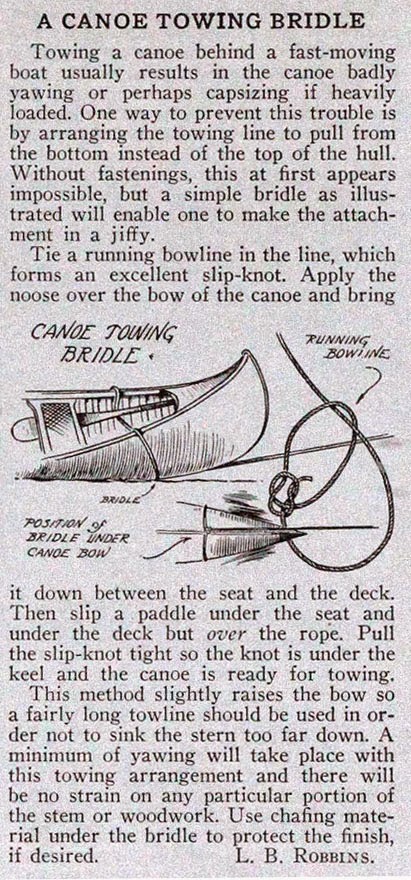Came across this little article about rigging up a towing line bridle with a running bowline slip knot and paddle for tension...

It's from archived edition of Field and Stream (April 1933 Vol. 37 No. 12) so obviously quite dated. Of course this method is really only relevant to older boats that don't have those Tug Eye things installed
Figured it could be a quick method for tracking up a rapid without having to tie a typical lining bridle.
Anyone try something like this before?

It's from archived edition of Field and Stream (April 1933 Vol. 37 No. 12) so obviously quite dated. Of course this method is really only relevant to older boats that don't have those Tug Eye things installed
Figured it could be a quick method for tracking up a rapid without having to tie a typical lining bridle.
Anyone try something like this before?
